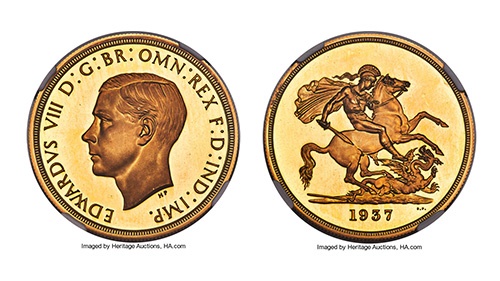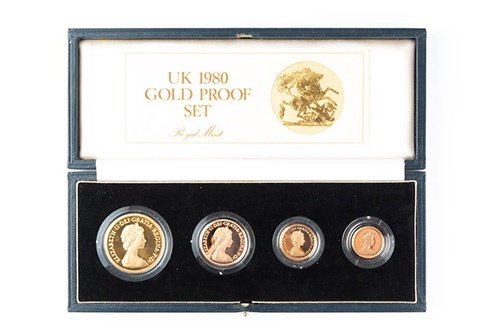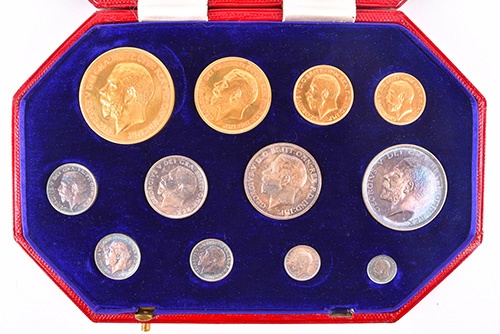Are Proof Coin Sets Valuable?
The finest quality coins on the market and the collector's top choice
08/02/2023
Unlike circulated coins, proof coins were never intended for circulation.
Whilst today, it is widely recognised that they are produced purely for the collector’s market, they were originally manufactured as early samples of specific coin issues that would be presented to the Ministry of Finance and the Royal Mint for them to approve prior to circulation.
Examining proof coins was also a way for the function of the dies (machinery used for production) to be checked and regulated. The coins were then retained for archival purposes and today are highly collectable pieces due to their incomparable mirror-like finish, rarity, and historical value.
As a result of increased demand from numismatists in the present day, the Royal Mint have issued numerous limited-edition proof coin sets as commemorative pieces. Judging by the volume of such sets that were issued throughout the reign of Her Late Majesty, Queen Elizabeth II, in commemoration of various milestones, it is no secret that the popularity of proof coins has risen dramatically in recent years. In line with this, we have seen them selling for increasingly higher prices at auction, with rare historical sets having being known to fetch hundreds of thousands of pounds.

An Edward VIII gold proof pattern of £5, 1937, that broke its own auction record for a British coin. Sold at Heritage Auctions for £1.39m.
Credit: Heritage Auctions, HA.com
How are proof coins produced?
As coins of the finest quality, proof coins are hugely popular amongst collectors due to their rarity and generally high value. The production process is a meticulous one, with the coins being produced in characteristically small numbers due to the intense level of craftmanship and attention to detail required to carry out the process correctly.
Whilst regular coins are struck once under normal pressure and at high speed, proof coins are struck at least twice, and sometimes up to six times, at a lower speed and under less pressure, in order to preserve the coin’s fine detail and produce exceptionally sharp designs. By striking the coin multiple times, it is left with a brilliant shimmer and level of intricacy that cannot be achieved any other way.
Before the blank coin is struck, it is first polished by hand to remove any unwanted elements that might upset the process. After being struck, the coin is scrupulously inspected for the slightest faults or imperfections. This is key to the process as it is the famed flawlessness of proof coins that helps them obtain their high value.
Having been produced and handled in accordance with specific guidelines, the coins are packaged in protective casing to maintain their immaculate condition. The dies are routinely cleaned with air and polished between each coin so that defects don’t occur with the next one. The proof coin manufacturing guidelines are so rigorous that no more than 50 can be struck within the same hour on one machine. Additionally, coin dies are only allowed to strike a few hundred coins before each must undergo a thorough maintenance service, which involves chemical treatment.
George V, 1910-36. Proof set of twelve coins, 1911.
How to tell if a coin is a proof
Telling a proof coin apart from a regular circulation coin is relatively easy. However, distinguishing them from other uncirculated coins can be trickier if you are not familiar with their characteristics.
We have highlighted some of the key differences below:
- Intricate design – Due to the multiple strikes undergone by a proof coin, they typically boast extremely defined and detailed designs.
- Finish – Although all uncirculated coins have a shine to them, the shimmery finish on a proof coin is second to none because of its unique striking process. Often, they have a mirror-like field (background) with frosted features in the foreground.
- Rarity – Historically, there were fewer proof coins minted than uncirculated coins, meaning they are generally less common and therefore more sought after by numismatists.
- Value – Usually, the value of a proof coin is higher than that of an uncirculated coin because the features listed above make them such unique and collectable pieces.
The Royal Mint, The Sovereign 2017 Five Coin Gold Proof Set
Why are proof coin sets valuable?
Proof coins are the highest quality coins produced by mints across the world. Their unrivalled finish and intricate designs make them particularly admired by collectors, and in terms of craftmanship and attention to detail, they are quite literally worth their weight in gold.
There are numerous factors that contribute to the value of proof coin sets but age and rarity are the two greatest indicators. Since they were originally produced as prototypes, very few proof coins were made and those that were produced for that purpose, generally before 1970, tend to hold a higher value. Those that were issued pre-twentieth century are even rarer and also carry historical value, so subsequently fetch the highest prices overall at auction. Although proof coins produced in more recent years can still hold a lot of value, it is the historical value of older coins that gives them prestige.
Design is also an important factor to consider, with some designs being rarer and more sought after than others. Furthermore, possessing an original Certificate of Authenticity is highly advantageous when determining the value of a proof coin set, as having verified authenticity will boost its value when you come to sell. This, accompanied with protective casing, will ensure the value of your coin does not diminish due to over-handling and damage.
Do you have a proof coin set that you are thinking of selling at auction?
The expert team of Valuers at Dawsons can provide a free appraisal that will help you realise the value of your coin set.
Please do get in touch, we would love to hear from you.


